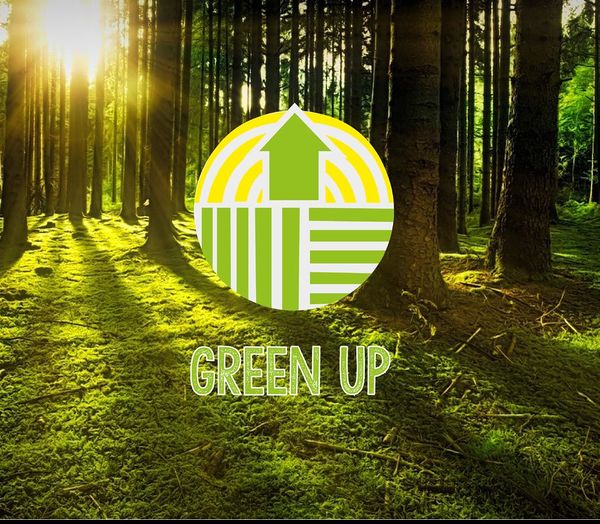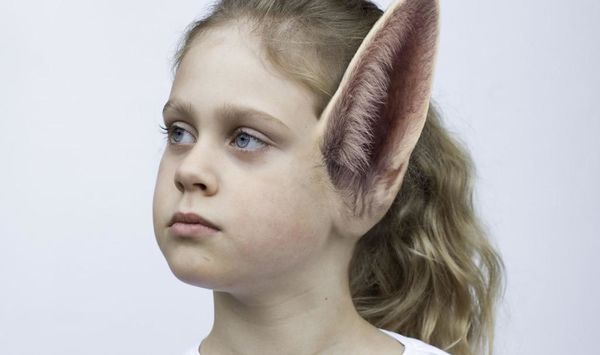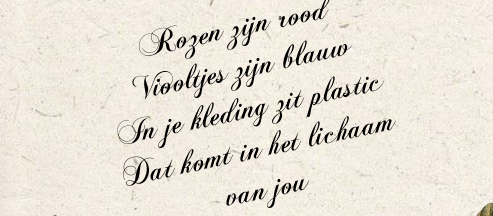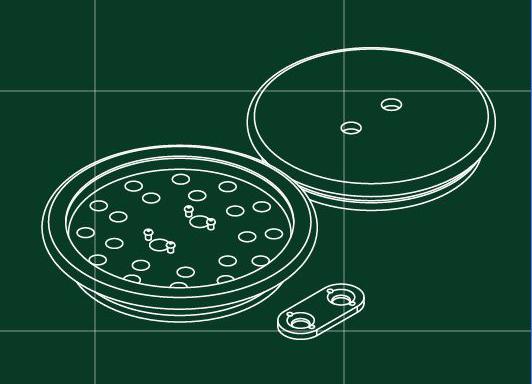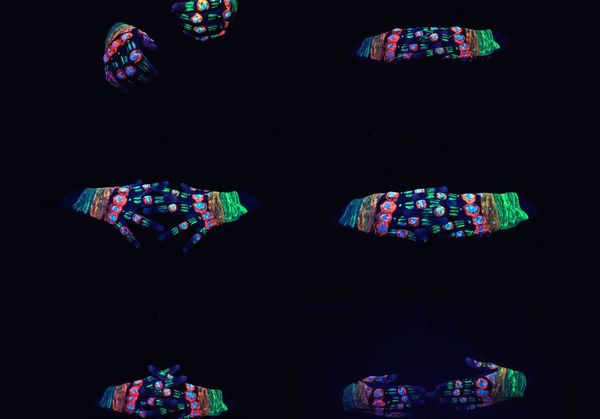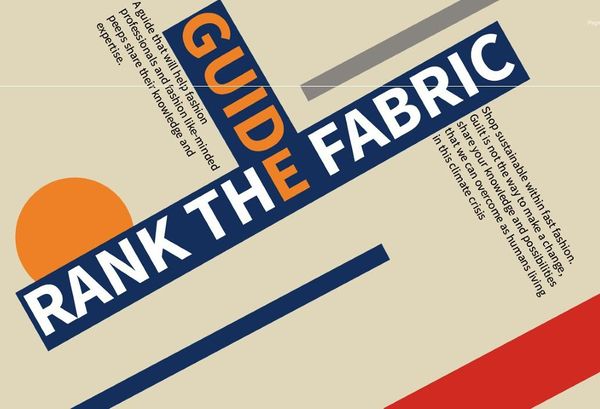New Earth Exhibition, Dec 2019
Contents
This minor challenges students of the Willem de Kooning Academy in Rotterdam to research and
Green up! - by Bernice Heeren
The government can't force people to 'green up' their lot or house because there isn't any law that protects private land. So who will become the leader of this, who is the first one that makes the change. Is it normal to give people a reward in the future if residents are willing to improve their lots with trees, grass or other sustainable green solutions? Or is the idea of a reward ridiculous and is the only way to achieve it by forcing them? It is important and it is time that we become more aware of the (green) environment we live in day in, day out...
Migration of Lichen - by Naomi Carbin
What if I were to tell you that the current discourse about the climate, of OUR planet. is mainly caused by our own egos. We keep pointing fingers at others, but we never dare reflect upon our actions. What if our evolution, as the human species, lie in casting aside this 'ego'? No longer holding on to our ego and reconnecting with our surroundings, something we are part of but lost our connection with. The answer as to how to reconnect is already all around us without us being aware of it. Every living organism is in constant symbiosis with each other and their surroundings. So what if we went into a conscious and active symbiosis with another organism, that might help us evolve and survive in the coming future. A future where we have harmed the earth to become uninhabitable.
My projects cast a glimpse on the future of the human species after a climate apocalypse, where we are urged to look at new solutions for our survival.
Climate proof babies - by Rianne Hogeveen
If we keep reproducing the way we do now, we humans won't survive in the future. Because we don't evolve quick enough to respond on upcoming climate changes. So I found a solution, we need to create climate change proof babies. Combine our DNA with other species so we could use their features to survive the upcoming climate changes. For example, use the ears of a fennec fox so our body would cool down more easily, a really handy feature for the still rising temperatures. Let's also change other features like intelligence or athletic skills, think about what does your child need in this changing future. We have the power to make the human race resistant to any climate change!
...but wait, is that really what we want? Are mutated children the answer to keep the human species alive? Do we want our children to change or can we change and save their future?
Why body positivity needs more diversity - by Anne Benschop
Why do we need more body positivity you may ask yourself? Isn't there enough already? But if you look closely and in different areas it isn't the case. Especially if you look in the fashion industry. Fair enough, there are some plus-size models, but they are the same shape and sizes, we need more diversity. Even today with a lot of people being body positive, still some people are trying to achieve the hourglass shape by manipulating their bodies, for example with the waist trainer. It's funny that the first body positive movement was to advocate women in not using the corset and now we are going back to using a modern corset to shape our bodies to the ideal. With my project I want to show a future scenario where there are plus-size clothes with built-in functional combinations of the corset and modern waist trainer. With this I want to show the bizarre thing that even today we are trying to manipulate our bodies to a crazy beauty ideal. If there is more body positivity diversity show in fashion industry and seem as normal instead of a cheap way to profit from, maybe then people wouldn't feel the need to manipulate their bodies.
FAR FROM FASHION - by Emma Marit Kraayenhof
Do you know what your clothes are made of? Probably a synthetic fabric like polyester since this is the most used textile in the fashion industry nowadays. But did you also know that you end up eating your garment? By washing your synthetic items, microfibers, also known as microplastics, shed off and find their way to the oceans. Marine life ends up eating these plastics and we eat the fish. Even if you don’t eat fish the microplastics still find a way to become you since they also integrate into our drinking water, sugar and, salt. Those tiny bits of plastic get into our brains, blood and other parts of the body which can eventually lead to inflammatory diseases that will cause defects to lungs, kidneys and the liver. Shocking right?
Me, as a 4th-year fashion student didn’t know this. So I can imagine this is also new information for you. With my project, an informative and inspiring magazine, I want to make people more conscious of the fact that we have to think about how we consume clothing. We as consumers have to be pioneers in demanding better and more conscious clothing.
PROJECT: LINA - by Britt van den Berg
Have you ever found the difficulty of wanting to eat more sustainable, but are concerned about getting all nutrients in? This project is based on this struggle I have. Because most protein rich foods (which are regulating your muscle growth, hormones and immune system), are animal derived and harmful for the environment. Spirulina however is a protein rich food which isn’t as bad for the planet. These eatable micro-algae consist up to 70% protein, and produces up to 20x less CO2eq emissions compared to meat protein.
I’m researching possibilities of growing spirulina at home, and making it easier by designing tools that are open-source. With my project I want to encourage people to cultivate, eat and share spirulina, in order to transition to a more sustainable food system.
CORAL COMMUNICATES THROUGH COLORS - by Sophia Bernson
My project is about coral. Corals are a part of one of the most spe- cies-rich ecosystems under water. If coral is healthy it has various colours, which change when temperatures rise. They feel sick just like you do when you are having a fever. The colour of coral changes to white. This is called bleaching. Afterwards, corals produce their own sort of sunblock in an attempt to protect itself and this causes them to gain a fluorescent glow. These colours should be seen as a cry for help. There is a correlation between the colour of coral and its well-being. I wanted to attract people’s attention by using colours to mimic the behaviour of coral and to make it visually clear that we have to keep looking at colours, because it can tell us a lot about the well-being of coral. In this way, I combine visualization with educati- on and try to inform people about this subject.
RANK THE FABRIC GUIDE - by Marvin Stanley
Do you think you can buy/make consciously within fast fashion?
The way garments are made is extremely pollutive for the environ- ment and humankind. We as humans think we can not effect my simple garments but we can. In the end, the race, plastics, and toxic food coloring will be in our drinking water, food and skincare. But it still difficult to make a conscious decision while shopping/ designing and especially within fashion.
I made a guide that will provide you with enough information that will guide you to help you out to a conscious decision. Share this guide within your fashion community to share your knowledge and from others.
Links
CONTRIBUTE
Feel free to contribute to Beyond Social.
